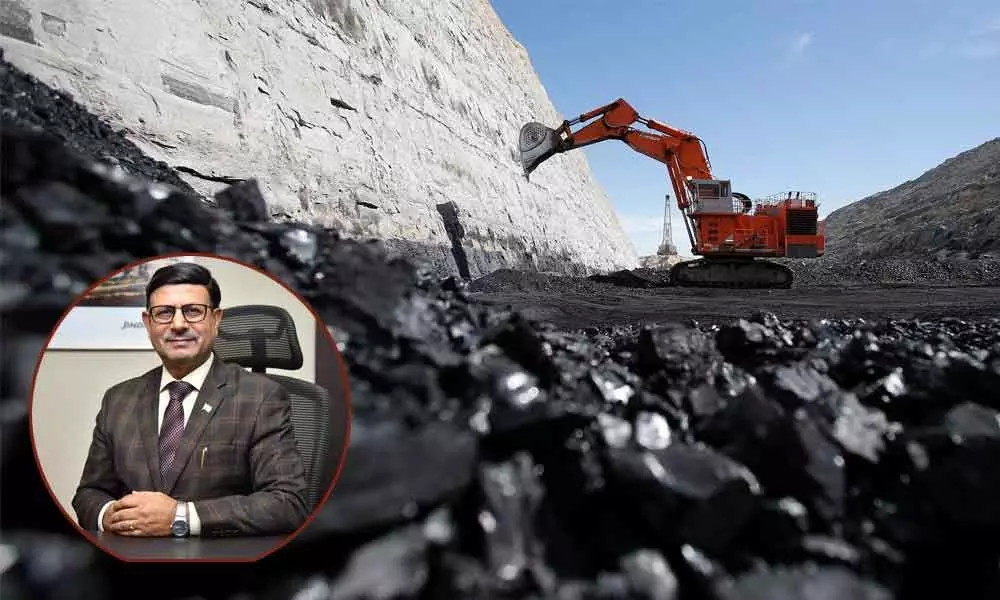Commercial coal mining will bring down imports

VR Sharma, Managing Director, Jindal Steel and Power Limited (JSPL)
Jindal Steel MD says domestic steel demand remained subdued due to Covid-19 lockdown
The government's recent announcement to permit coal mining for commercial sale marks a fundamental shift in the government policy to address the continuing shortfall in domestic coal production to meet the country's requirements, VR Sharma, Managing Director, Jindal Steel and Power Limited (JSPL), said in an interview.
India has the world's fourth largest coal reserve, but the country imported 247.1 MT of coal in 2019-20. "The commercial coal mining will likely to reduce India's dependence upon imported fuel," he added.
In keeping with JSPL's stated objective of becoming debt-free in the next few years, JSPL has divested its entire stake in its step down subsidiary, Jindal Shadeed Iron and Steel Co LLC (JSIS Oman). The value of the enterprise deal is estimated to be over $1 billion.
Sharma said, "This is in line with our vision to deleverage our balance sheet and create a much healthier balance sheet for our investors and stakeholders".
JSPL MD said that even during Covid-19, JSPL Indian operations recorded ever highest monthly steel (including pig iron) production of 626,000 tonnes in June 2020. "Owing to the Covid-19 lockdown, the domestic steel demand was subdued during the last quarter; hence export evacuation supported the plant operations and capacity utilization," he added. Excerpts
What has been JSPL's performance in steel production and sales in the last quarter? Are exports powering steel consumption?
Even during Covid-19, JSPL Indian operations recorded ever highest monthly steel (including pig iron) production of 626,000 tonnes in June 2020 and ever highest quarterly steel (including pig iron) production of 1,670,000 tonnes in Q1 FY'21.
The company recorded a 12 per cent growth (quarter-on-quarter) in sales volumes and an 8 per cent rise (q-o-q) in standalone steel production (including pig iron) during Q1 FY21.
JSPL clocked ever highest standalone export sales of 900,000 tonnes in Q1 FY21, the export sales contributed to 58 per cent of total sales volumes in Q1 FY21. JSPL's consolidated steel sales rises by 7 per cent Q-o-Q. Yes, owing to the Covid-19 lockdown, the domestic steel demand was subdued during the last quarter; hence export evacuation supported the plant operations and capacity utilization.
What is the JSPL debt deleveraging strategy and target? What is the rationale for the divestment of the Oman asset?
In keeping with JSPL's stated objective of becoming debt-free in the next few years, JSPL has divested its entire stake in its step down subsidiary, Jindal Shadeed Iron and Steel Co LLC (JSIS Oman). The value of the enterprise deal is estimated to be over $1 billion.
This is in line with our vision to deleverage our balance sheet and create a much healthier balance sheet for our investors and stakeholders. Our restructuring plan is proceeding as we had envisaged.
JSPL is a firm believer in the India growth story, and India's potential to become an engine of global growth. We think we have an important role to play in the evolution and growth of the Indian steel industry.
What is the JSPL view on import substitution and Atmanirbhar Bharat?
India is already Atmanirbhar as far as steel products for infrastructure are concerned. JSPL is pioneered in technology and development of products catering to the requirements of oil & gas, ship building, railways. Our peer group has the capacity and capability to deliver special steel to cater to the requirements of the auto sector.
On to raw materials, the Indian steel industry is to a certain extent dependent upon imported raw materials like metallurgical coal. In 2007, we decided to produce steel through Indian high ash coal by converting it into syngas and commissioned the world's first Syngas-based DRI plant in 2013 to make steel.
Hence, we demonstrated the capability of making steel by the usage of 100 per cent indigenous raw material.
What is the strategy for the recently announced policy on commercial mining of coal blocks?
The government's recent announcement to permit coal mining for commercial sale marks a fundamental shift in the government policy to address the continuing shortfall in domestic coal production to meet the country's requirements.
India has the world's 4th largest coal reserve, but the country imported 247.1 MT of coal in 2019-20. The commercial coal mining will likely to reduce India's dependence upon imported fuel.
What is the capacity of the coal gasification project?
JSPL operates the world's first coal gasification based DRI plant of 2.0 million tonne capacity at Angul where syngas is used to make direct-reduced iron (DRI) or sponge iron, an input required in the steel-making process.
JSPL's coal gasification plant capacity is 225,000 NM3 per hour of syngas, which is supporting the 2.0 million MT of syngas based DRI plant.
How much coal is JSPL buying currently? How can coal imports be reduced?
JSPL currently has a requirement of around 5.5 million MT per year of metallurgical coal and 7 million MT of thermal coal requirements.
Improved domestic availability will reduce dependence upon imported thermal coal. Also, India is dependent upon imported metallurgical coal, but the Government's impetus on coal gasification will likely reduce the dependency on imported metallurgical coal in the future.
What is the outlook on demand for steel as the economy opens up?
The government is pushing for infrastructure-led growth, and investing heavily in its development. The railways' sector has been the one bright spot in the last few years, in terms of growth and steel use, mainly driven by its capital expenditures in modernization projects and record production of rolling stocks.
The machinery and yellow goods sector demand will likely to become healthy with the advent of the increased mining operation. Governments have already auctioned a sizable number of iron ore mines, and upcoming commercial mining of coal will further add to the demand for yellow goods and other steel products from these segments.














